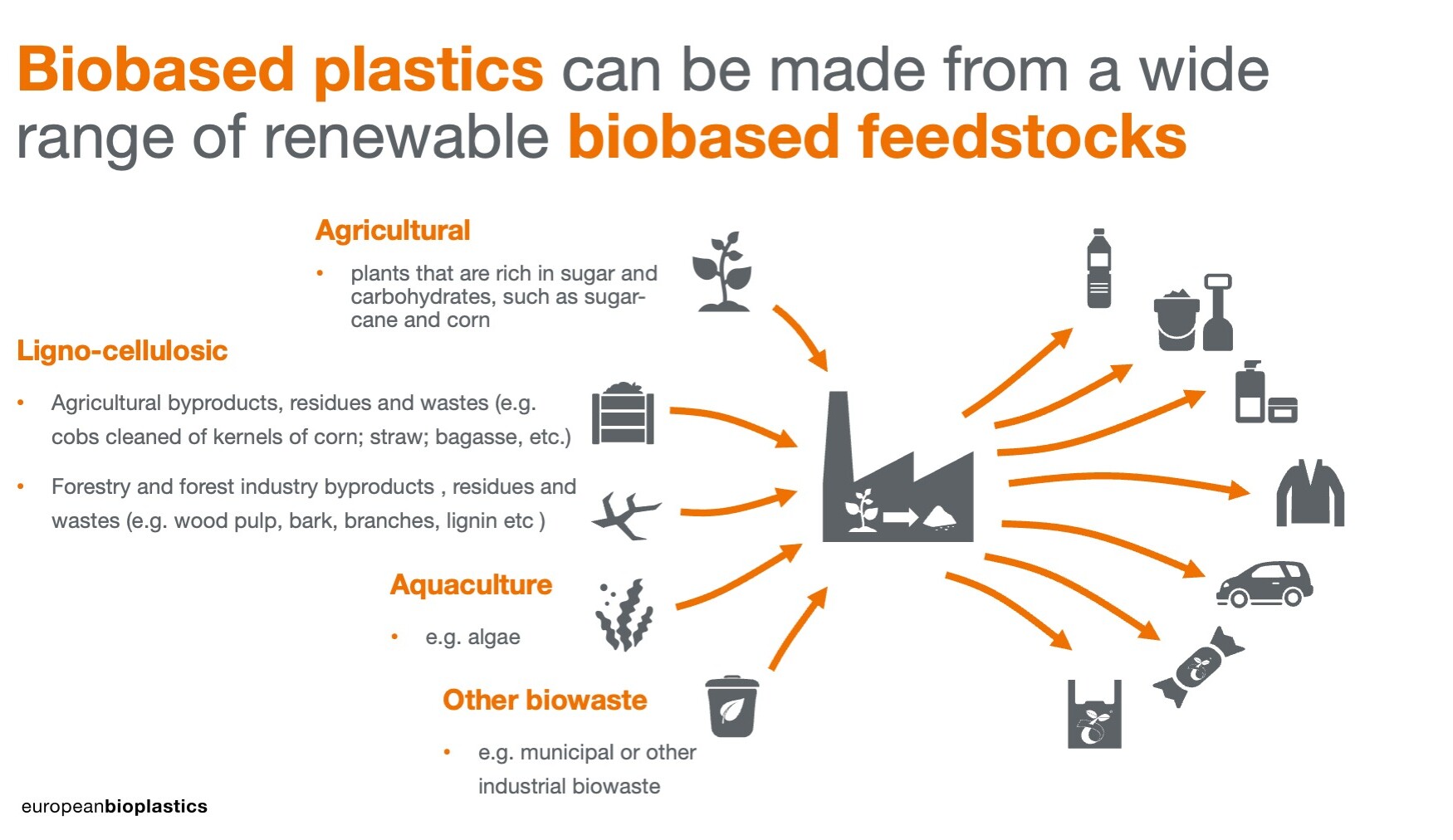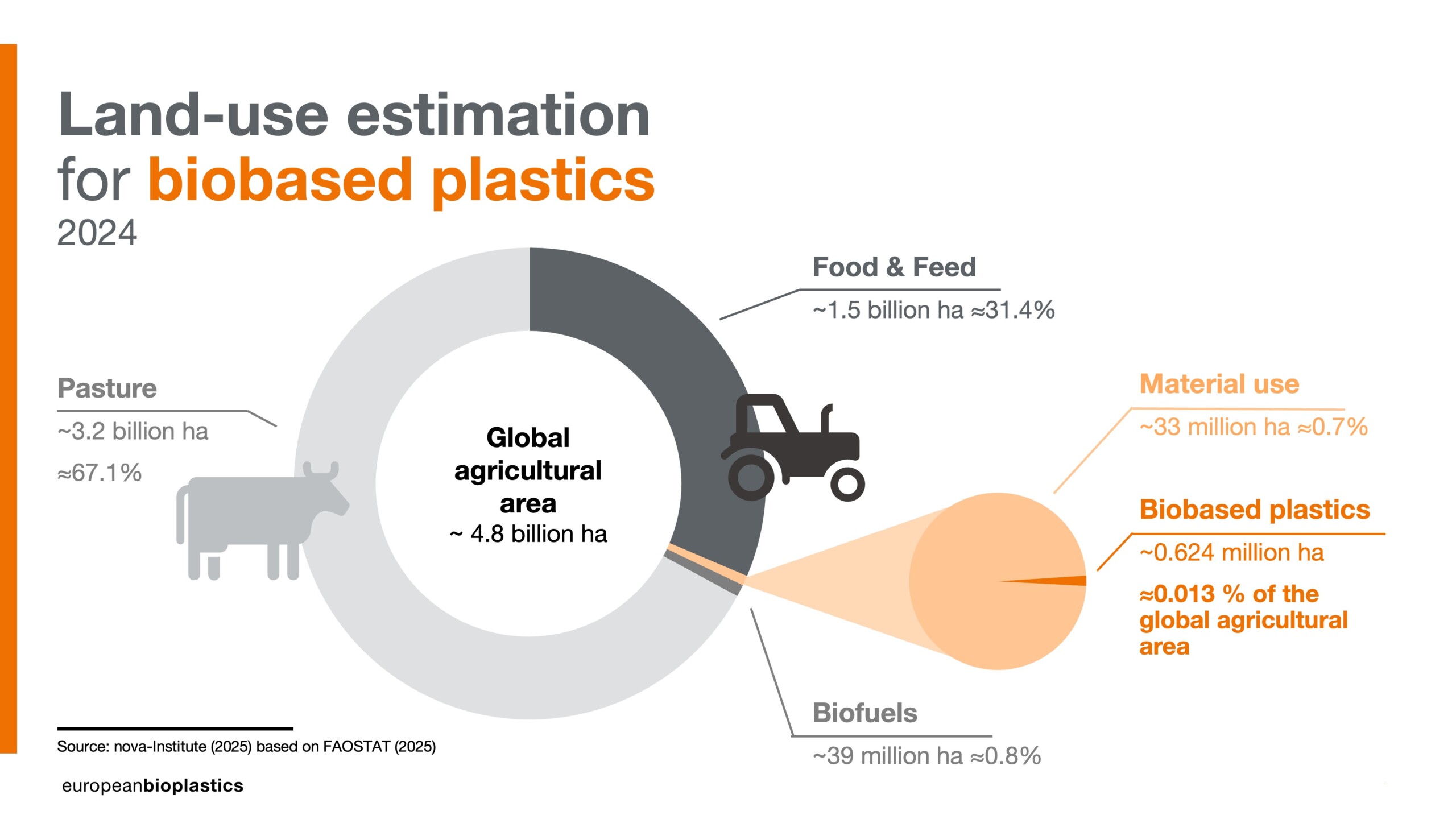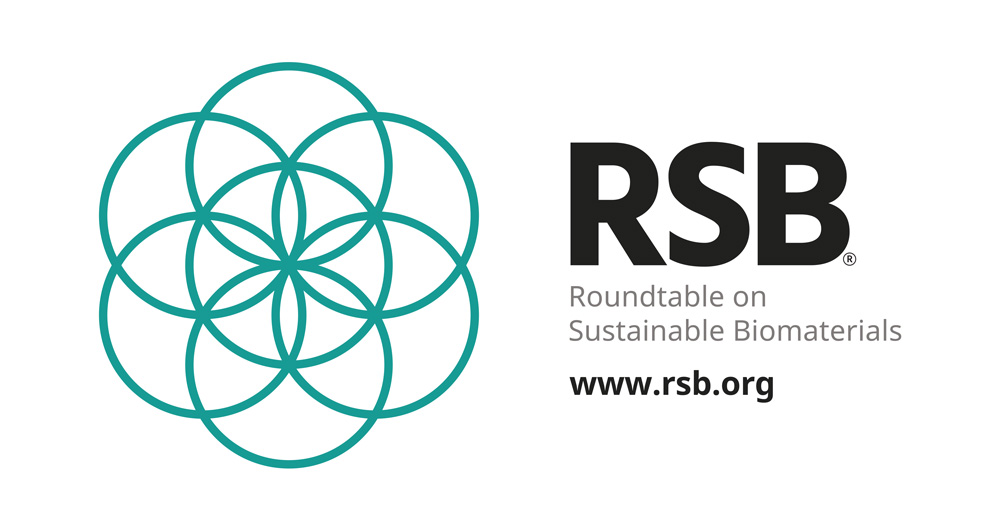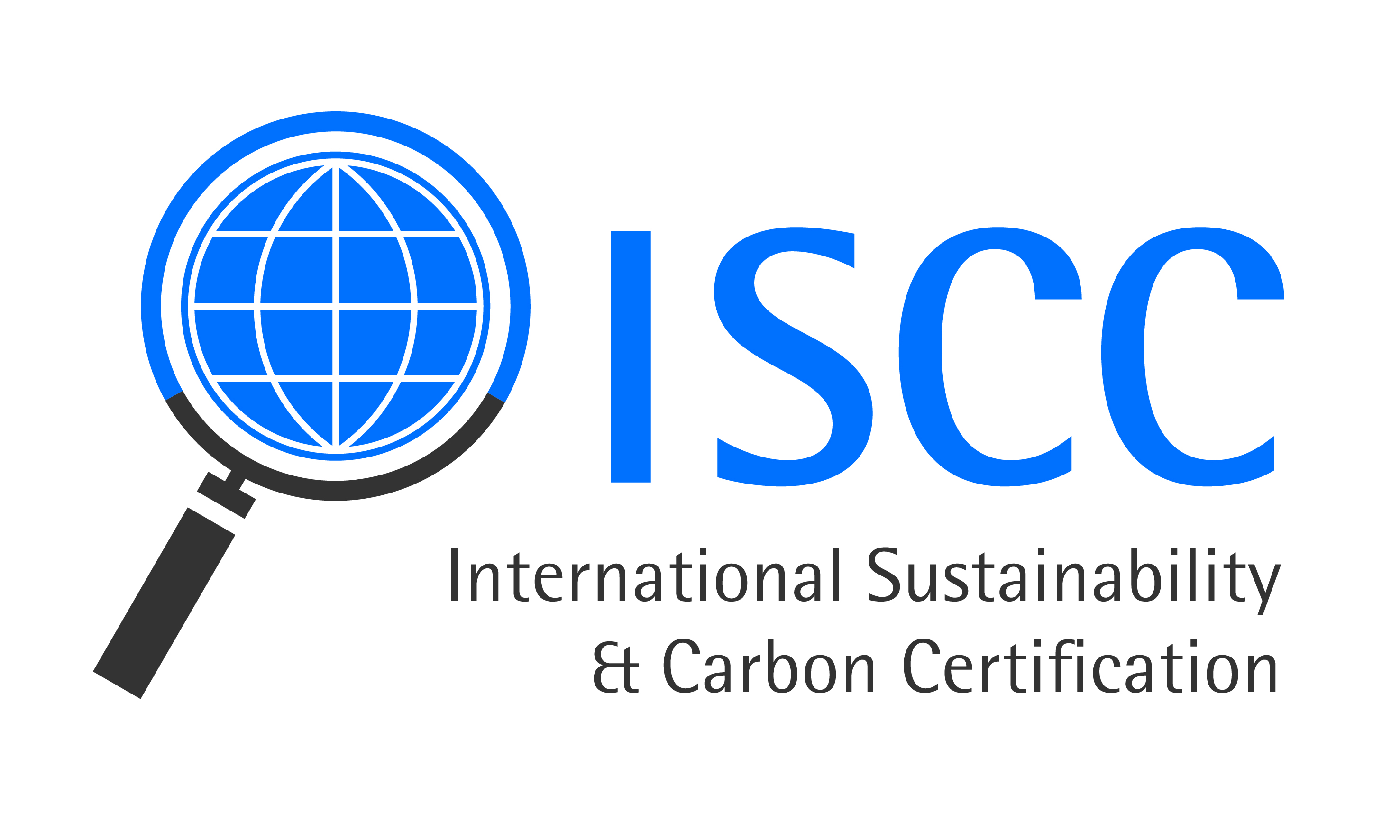Renewable feedstock
Today, biobased plastics are mostly made of carbohydrate-rich plants, such as corn, wheat or sugar beet, so called food crops or agriculture feedstock. Currently, these agricultural crops and others can be used to efficiently produce bioplastic, using limited land and solid yields.

The bioplastics industry is increasing its use of other sources of biomass and exploring potential future sources with a view to the development of new, innovative materials in future.
A non-exhaustive list of examples of such sources may be:
- Ligno-cellulosic:
- Agricultural byproducts, residues and wastes (e.g. cobs cleaned of kernels of corn; straw; bagasse, etc.)
- Forestry and forest industry byproducts, residues and wastes (e.g. wood pulp, bark, branches, lignin etc)
- Other biowaste (e.g. municipal or other industrial waste)
Land use
In 2024, the global production capacities of bioplastics amounted to 2.47 million tonnes. This translates to approximately 0.624 million hectares of land. Consequently, the surface required to grow sufficient feedstock for today’s bioplastics production just reaches 0.013 percent of the global agricultural area (4.8 billion hectares). Metaphorically speaking, this ratio correlates to the size of an average cherry tomato next to the Eiffel Tower. The misconception that the use of biomass for materials may be detrimental to food security is flawed and, according to RCI, distracts from the powerful causes of hunger in the world. According to the World Food Programme (WFP), in 2023, more than 300 million people faced acute hunger as a result of new and protracted conflicts, the global climate crisis, the economic aftershocks of the coronavirus pandemic, and food and energy price inflation.
Sustainable sourcing of feedstock is key
The sustainable sourcing of feedstock is a prerequisite for more sustainable products. Negative impacts like deforestation of protected areas and environmental damage caused by bad agricultural practice must be avoided. The same applies to social criteria and human rights. The implementation of good agricultural practice, including guidelines for social standards (health protection etc.), is part of the sourcing strategy of many companies, e.g., by implementing a suppliers’ code of conduct.
Certification is an appropriate tool to ensure the sustainable sourcing of biomass
There are several stakeholder initiatives committed to achieving sustainability goals for specific products, such as the Better Sugar Cane Initiative. The independent certification of sustainability criteria is another approach to help follow the guidelines set by the European Renewable Energy Directive (RED). Corresponding certification schemes have been established in several European countries (e.g. ISCC).



